Imagine a rooftop garden full of stunning native plants, blowing in the breeze – it’s magic!

Commitment to sustainability
Back in 2019, the Mirvac team, Didi Stigter and Victoria Stiles, invited several of us to visit the first indigenous rooftop farm and other cultural gardens at the recently developed South Eveleigh precinct. The rooftop garden is called the South Eveleigh Native Rooftop Farm. John Aitken, Wendy Grimm and Heather Miles were fortunate to be able to go.
Mirvac who managed the redevelopment of the precinct contacted the Australian Plants Society NSW to explore how best to share information about native plants with residents and the public. They hope to inspire new insights and learning about growing natives and creating a more sustainable future for us all. As part of those discussions, we spent a few hours in the gardens. They showed us stunning native rooftop garden.
Developed by Clarence Slockee and team – native plant gurus
Jiwah, an Aboriginal company, led by Clarence Slockee, developed and maintains all the landscapes across the precinct. Many people will have seen Clarence on Gardening Australia talking about this garden. At the time of writing, the rooftop garden was just over a year old. The garden is a showcase of beautiful and increasingly self-seeding native plants and edibles. Clarence and his team shared with us some of their successes and challenges.
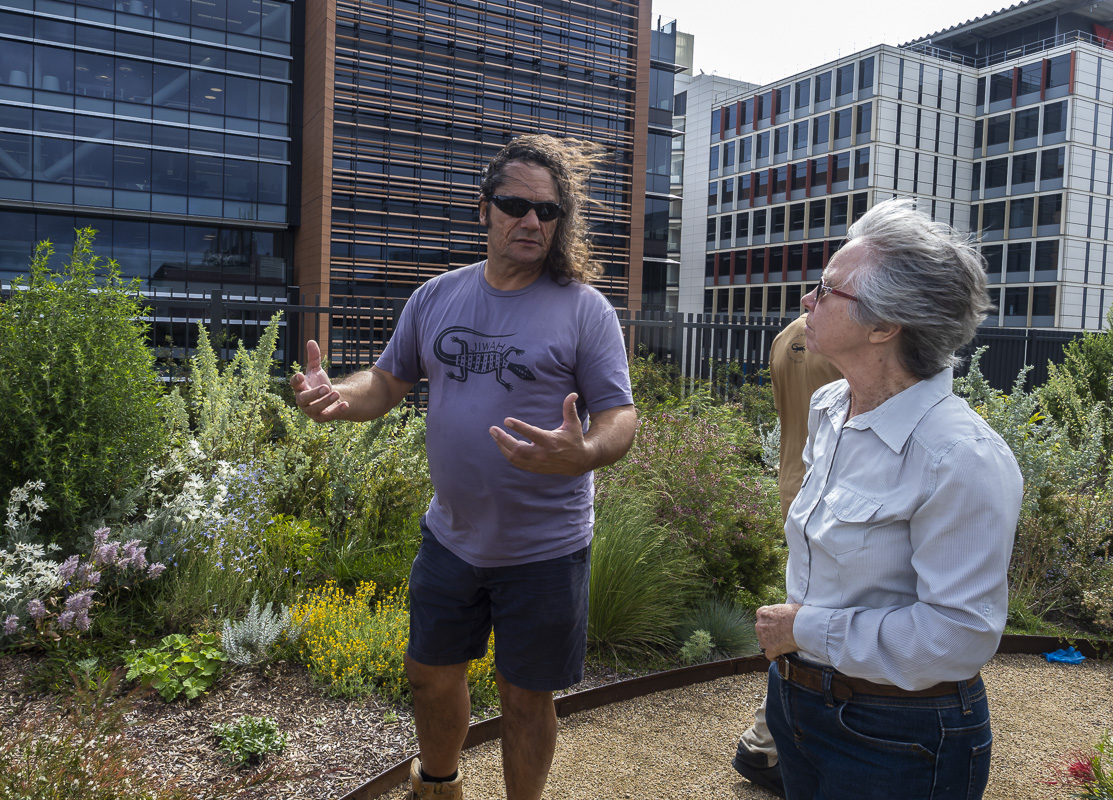
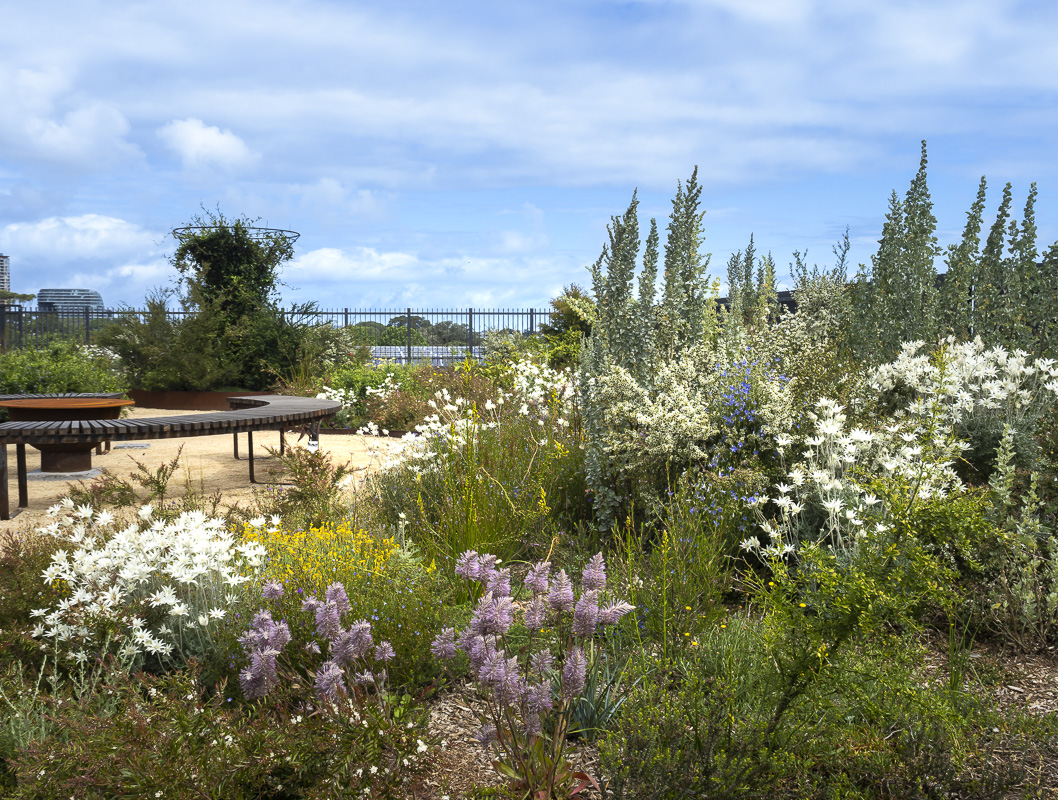
Clarence Slockee, with APS NSW member, Wendy Grimm, and the garden, image Heather Miles
Successes and challenges
Rooftop gardens
As no doubt people are aware, rooftop gardens are challenging to build and maintain. Not only is there the wind issue, the soil medium and its weight have to be carefully managed so as not to overload the infrastructure of the building, and water has to be equally carefully controlled. This takes considerable planning and adjustment to meet building requirements.
Further, plant selection must be done with great care due to height and weight. Clarence shared that while they’d have loved to plant a Ficus, the weight of a mature fig was prohibitive!
The rooftop space is 500sqm on the top of an office building.
Design and layout of the garden
The garden was designed based on principles of Indigenous knowledge, collaborative design and permaculture. It is a thriving urban food production location.
The garden has an informal layout, with corten steep edging of the curved gardens, with decomposed granite pathways meandering between. In the middle of the garden is an open meeting space, with rounded seat and fire pit.

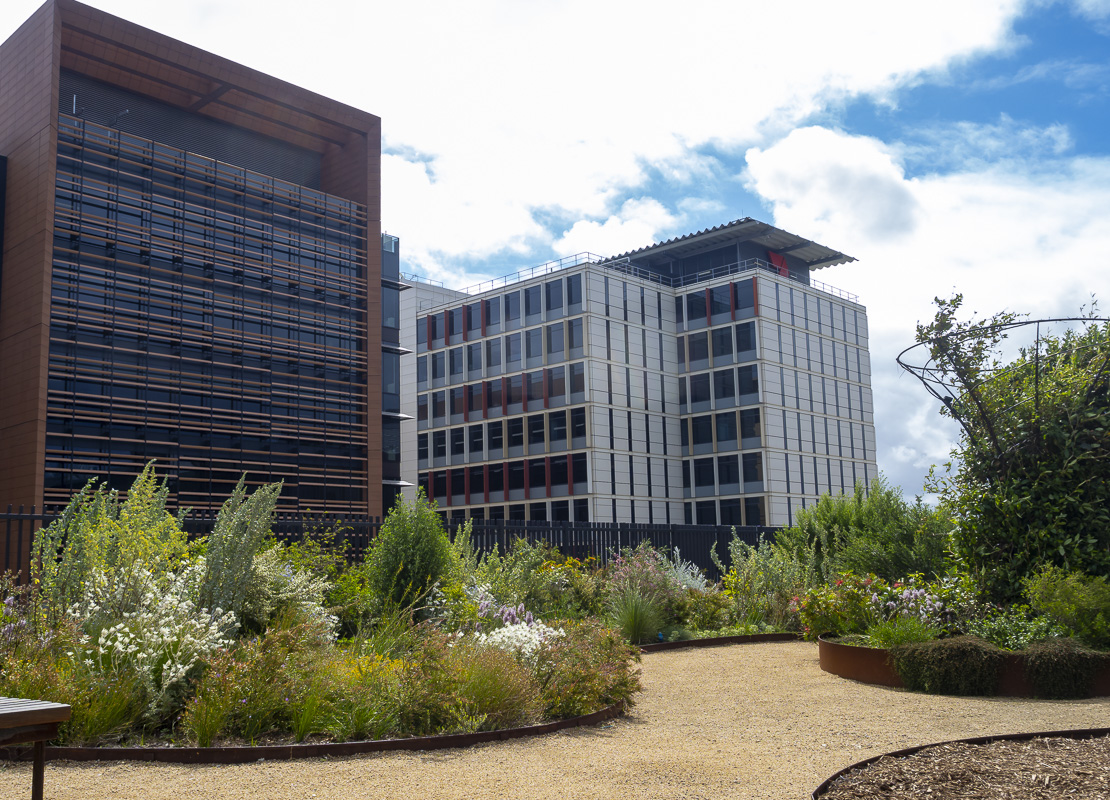
The informal structure of the garden contrasts and complements the steel fence and the tall corporate buildings behind. For people in those buildings looking down, the view of the garden would be spectacular.
An aerial view of the garden is reminiscent of many of the stunning Papunya paintings originating in central Australia.
Plants and planting
Clarence and team designed the garden to sustain itself. And even after a year, many plants were spreading and self-seeding. These included the flannel flowers (Actinotus helianthi), salt bush (Atriplex) and groundcovers, Chrysocephalum and Scaevola. The Bulbine creates a stunning display, along with recently planted Chamelaucium and Ptilotus.
Other plants in the garden include: Midgenberry (Austromyrtus dulcis, A. tenuifolia), Finger lime (Citrus australasica) along fence-line, Indigofera australis as a windbreak to protect limes and to add nitrogen to the soil, mauve and white Melaleuca thymifolia, Pink rounded moonflower (Disphyma crassifolium), Pigface (Carpobrotus glaucescens), Trachymene incisa, Viola hederacea, Ruby saltbush (Enchylaena tomentosa), Leafy Purple Flag (Patersonia glabrata) and teatrees (Leptospermum sp.).
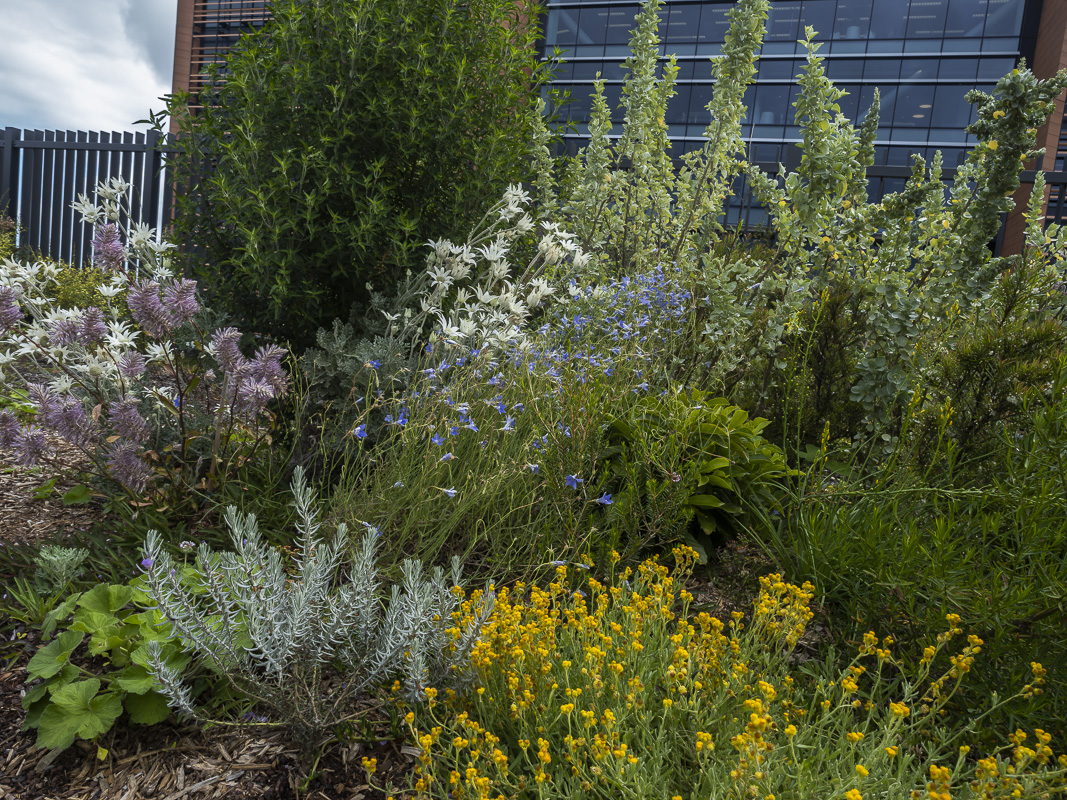

Maintenance and ongoing development
The native raspberry was too successful and delicious though the berries are, had to be removed. The plant took over a whole section of the garden and smothered everything else!
Weeds have been an ongoing challenge, although the planting is deliberately dense, so natural suppression is occurring.
However the outcome, and its ongoing development, showcases a stunning native rooftop garden.
Cultural garden on ground level – more magic
Clarence’s team also designed and maintains other gardens in the precinct, including the cultural garden at ground level. Full of Sydney indigenous trees, grasses and edibles, it is typical of the ecology that existed prior to European settlement.
Careful placement of Sydney sandstone slabs create places for visitors to sit and have some peace amongst the shrubs and trees.
The cultural garden, replete with grasses and strappy herbs (Themeda, Lomandra, Daniella) as well as ground covers like Chrysocephalum and Scaevola.
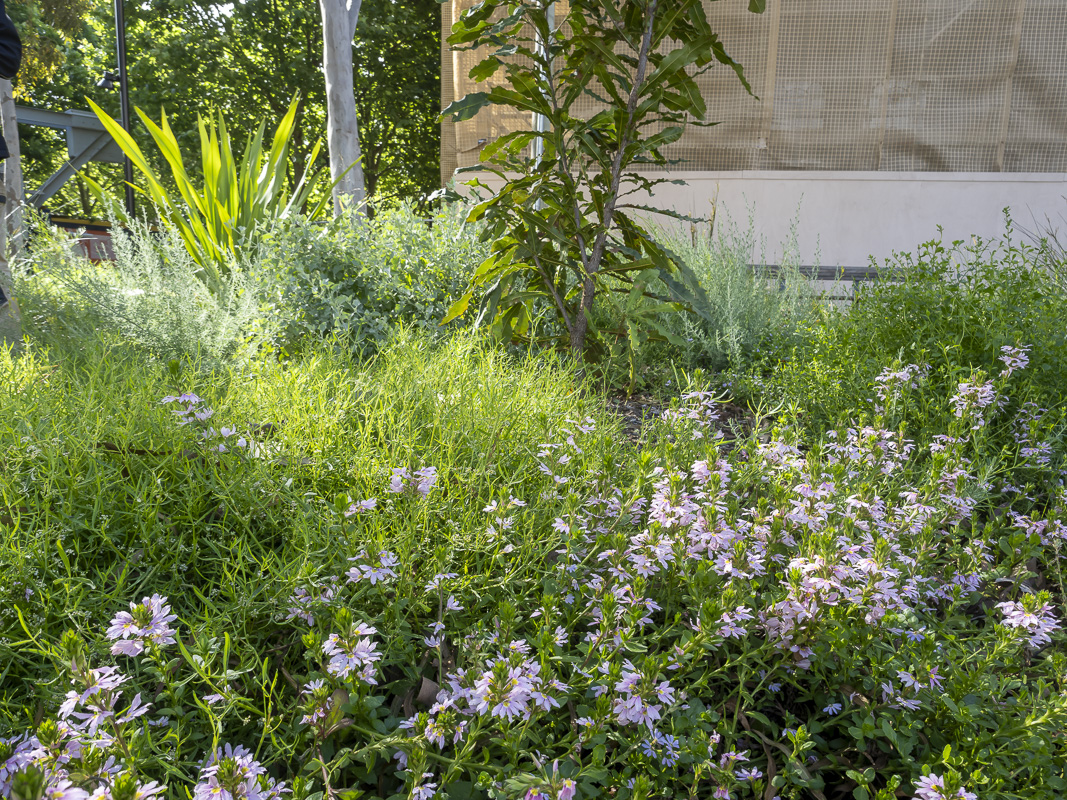

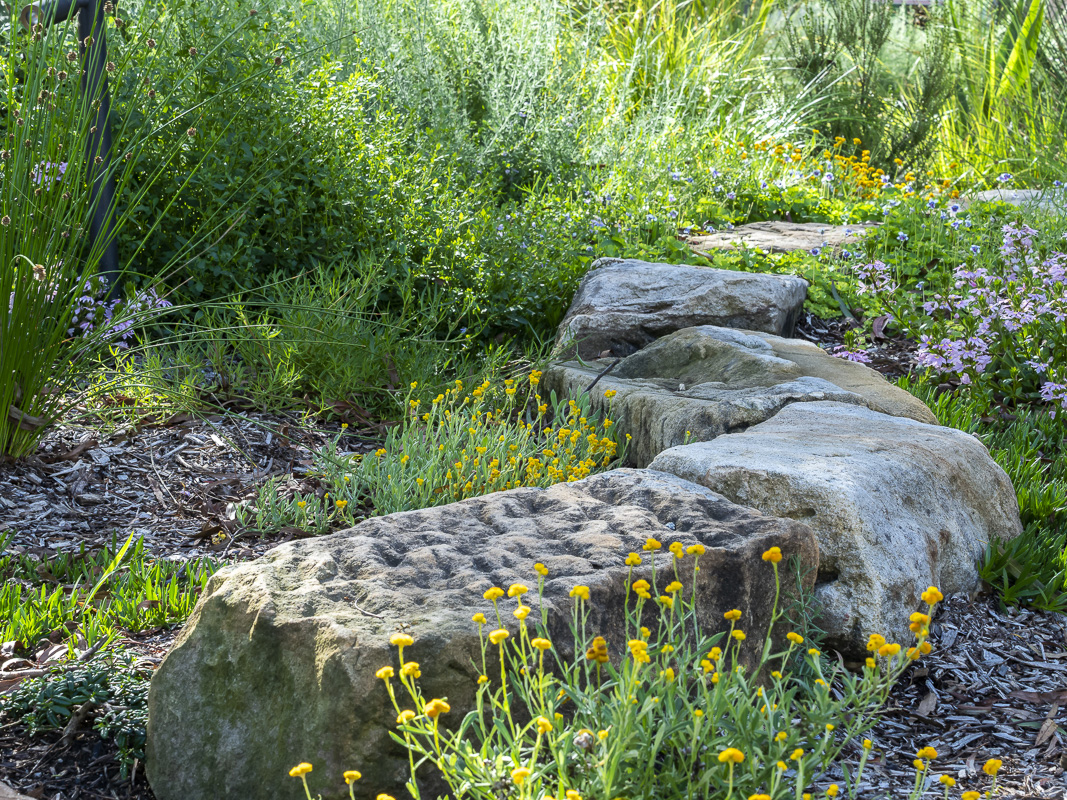
Additional plants flourishing in this garden include the Gymea Lily (Doryanthes excelsa) and Spear Lily (Doryanthes palmeri).
Covid in 2019 meant the gardens could not opened as planned. Further development of the site would occur in the meantime. And then the site opened for more public visits.
We look forward to watching the progress of the gardens, as they mature across the seasons and hope to visit again next year as restrictions lift and the gardens come into their full glory.
Thanks again to Mirvac and Jiwah for the generosity of their time and insights!


For more stories about native garden design, see our website.
 Australian Native Plants Society (Australia)
Australian Native Plants Society (Australia)